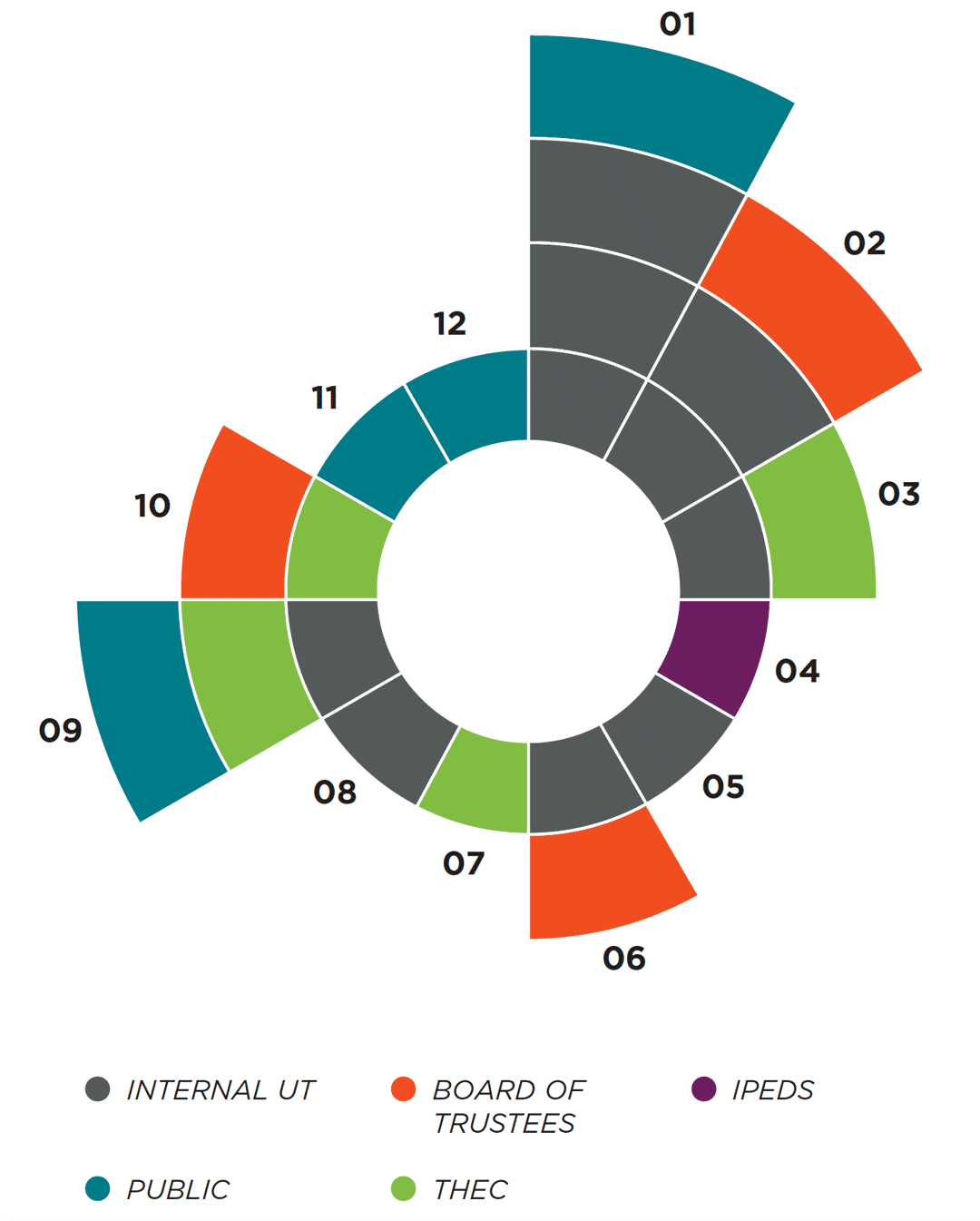Institutional Research
Institutional Research (IR) at the University of Tennessee System is dedicated to managing, utilizing, and reporting University of Tennessee data effectively. We strive to ensure the accuracy and integrity of the facts, figures, and statistics we provide, supporting decision-making and policy development across the university.
Role and Function
Our team collaborates closely with various stakeholders, including the UT System Board of Trustees and UT System administration, as well as external agencies, to provide accurate information and ensure consistent data quality. Key functions include:
- Providing student, employee, research, and financial aid information to the University of Tennessee Board of Trustees for all public meetings and special requests.
- Standardizing and ensuring accurate collection and maintenance of all University of Tennessee student data.
- Collaborating with the Tennessee Higher Education Commission (THEC) for student data collection and reporting.
- Overseeing federal and state UT data reporting, including to the Integrated Post-Secondary Education Data System (IPEDS) and to THEC.
Services
We provide a range of services to enhance university operations and strategy:
- Producing reliable institutional data reports for stakeholders.
- Supporting senior leadership with data-driven insights for decision-making.
- Developing accessible dashboards for data transparency.
- Offering advanced analytics, including predictive modeling and benchmarking, to inform strategic planning.
Our goal is to empower the University of Tennessee System with robust, actionable data, driving excellence in all facets of institutional operation and planning.
Reporting Cycle
O1 JANUARY
- Internal UT – UT System HR Annual Employee Turnover Report; Campus Submissions: Fall End of Term Student Data; UT Presence by Legislative District
- Public – UT Transparency Impact by County
02 FEBRUARY
- Internal UT – Campus Submissions: Spring Census Student Data; Annual Diversity Metrics of Student, Faculty, and Staff
- Board of Trustees – Winter BOT Meeting: UT Institutions’ Peers Comparison Metrics and At A Glance Infographic
03 MARCH
- Internal UT – Annual Request for Changes to Campus Data Collection
- THEC – Fall End of Term Student Enrollment and Course Data
04 APRIL
- IPEDS – Annual Survey of UT System Office and IPS Human Resources
05 MAY
- Internal UT – Annual Data Dictionaries and Staging Table Script and ITS/OIT IPEDS Licensing Reports
06 JUNE
- Internal UT – Campus Submissions: Spring End of Term Student Data
- Board of Trustees – Summer BOT Meeting: UT Faculty & Staff Academic Year Trend Metrics and At A Glance Infographic
07 JULY
- THEC – Spring End of Term Student Enrollment and Course Data
08 AUGUST
- Internal UT – UT System HR Annual Title VI (Diversity) Report
09 SEPTEMBER
- Internal UT – Campus Submissions: Fall Census and Summer End of Term Student Data and Annual Degrees Awarded
- THEC – Annual Student Degrees Awarded
- Public – UT Transparency Student Dashboards
10 OCTOBER
- THEC – Summer End of Term Student Enrollment and Course Data
- Board of Trustees – Fall BOT Meeting: UT Enrollment & Student Success Metrics and At A Glance Infographic
11 NOVEMBER
- Public – UT Transparency Salary Dashboard
12 DECEMBER
- Public – UT Transparency Student Dashboard Peer Data (Timing dependent on IPEDS release date)


You must be logged in to post a comment.